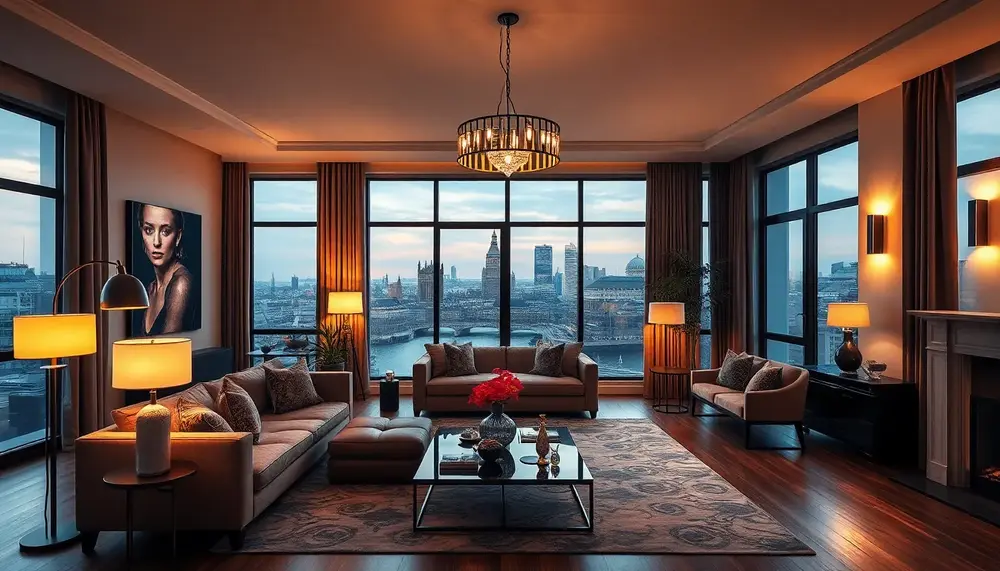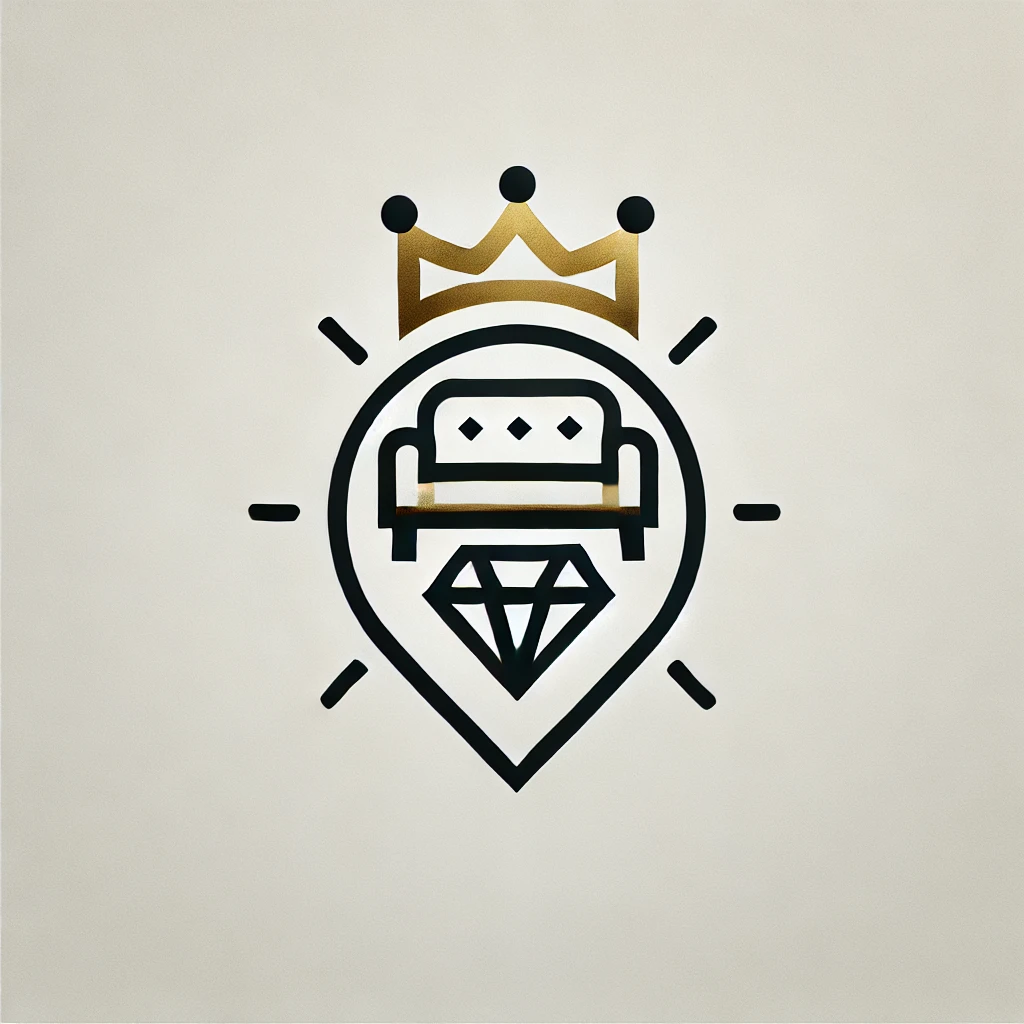Table of Contents:
Unlock Creative Opportunities in London’s Lighting Design Scene
London’s lighting design scene isn’t just buzzing—it’s practically electric with opportunity. Right now, studios and creative agencies are searching for designers who dare to push boundaries, blending technical skill with a bold, artistic vision. If you’re itching to unleash your creativity, London offers more than just a job; it’s a playground for experimentation and self-expression.
In recent months, there’s been a noticeable shift: projects are demanding immersive experiences, not just functional lighting. Museums, avant-garde retail spaces, and even historic landmarks are commissioning lighting designers to transform ordinary environments into unforgettable visual stories. It’s not about simply illuminating a space anymore—it’s about crafting an atmosphere that lingers in memory.
What’s genuinely exciting? Many London firms now encourage designers to bring their own signature style. Whether you’re passionate about sustainable lighting, interactive installations, or integrating smart technology, you’ll find clients eager for fresh perspectives. You might even find yourself collaborating with architects, artists, and digital innovators on projects that blur the line between art and technology.
So, if you’re craving a role where your ideas don’t just matter—they shape the city’s creative pulse—London’s lighting design scene is the place to make your mark. Opportunities here aren’t hidden; they’re waiting for someone with the courage to grab them and run wild.
Key Skills That Set Successful London Lighting Designers Apart
London’s top lighting designers stand out not just for their technical expertise, but for a distinctive blend of creative and practical abilities. What really makes a difference in this city’s competitive scene? It’s a unique cocktail of skills that goes far beyond knowing how to wire a fixture or select a bulb.
- Conceptual Vision: The best designers can turn abstract ideas into tangible lighting plans. They sketch, prototype, and iterate—often using digital visualization tools—to communicate their vision with clarity and flair.
- Collaboration: Working in London means teaming up with architects, engineers, curators, and even performance artists. Strong interpersonal skills and a knack for translating technical jargon into plain English are vital.
- Adaptability: Every project is different. Successful designers quickly adapt to shifting briefs, tight deadlines, and the city’s ever-evolving trends, sometimes juggling multiple projects at once without losing their creative spark.
- Regulatory Knowledge: London’s strict building codes and heritage site regulations require designers to stay updated on legal standards. Knowing how to navigate these complexities sets you apart from the crowd.
- Storytelling: Lighting in London is about creating an experience. Designers who can weave a narrative through light—evoking emotion, guiding movement, or highlighting history—are in high demand.
- Tech-Savvy Mindset: From smart controls to energy-efficient systems, embracing new technologies is a must. Those who experiment with cutting-edge tools often lead the most memorable projects.
Honestly, it’s this rare mix of artistry, technical know-how, and street-smart adaptability that puts London’s lighting designers in a league of their own. If you’ve got these skills, you’re already halfway to making your mark in the city’s vibrant scene.
London’s Lighting Design Employers: What They Look for and Where to Find Them
London’s lighting design employers are on the hunt for more than just portfolios—they’re after professionals who can deliver innovation, reliability, and cultural sensitivity. Whether it’s a boutique consultancy or a global architecture firm, employers are actively seeking designers who thrive in fast-paced, multicultural environments and can handle high-profile, often confidential projects with discretion.
- Problem-Solving Ability: Employers value designers who can tackle unexpected site challenges or last-minute client requests with creative, workable solutions.
- Client-Facing Experience: Firms often prioritize candidates who have managed client relationships, presented concepts, and negotiated project details with confidence and diplomacy.
- Portfolio Diversity: Having a portfolio that demonstrates versatility across commercial, residential, and public projects is a significant advantage.
- Continuous Learning: Many employers look for evidence of ongoing professional development—such as recent training, certifications, or participation in industry events.
- Local Network: Connections within London’s design and construction sectors can tip the scales, as employers often rely on recommendations and referrals.
Where to find these employers? Leading opportunities are concentrated in creative hubs like Shoreditch, Clerkenwell, and Southbank. Specialized recruitment agencies such as Light Collective and Illuminated Careers frequently list roles not found elsewhere. Industry events—think London Design Festival or PLDC—are hotspots for networking and direct introductions. Don’t overlook architecture firms with in-house lighting teams or major cultural institutions seeking freelance talent for exhibitions and events.
Staying proactive—regularly updating your online portfolio and engaging with London’s vibrant design community—will keep you visible to the employers who matter most.
Real Project Examples: Inspiring Lighting Design Work in London
London’s lighting design landscape is dotted with remarkable projects that have set new benchmarks for creativity and technical prowess. These real-world examples reveal just how far a lighting designer’s imagination can stretch—and what’s possible when bold ideas meet world-class execution.
- Tate Modern’s Turbine Hall Installations[1]: Designers have transformed this iconic industrial space with dynamic, large-scale lighting interventions. These projects often involve intricate programming and custom fixtures, turning the hall into a canvas for immersive, ever-changing experiences.
- Coal Drops Yard[2]: This retail and dining destination in King’s Cross features a lighting scheme that blends heritage architecture with contemporary flair. Designers used concealed LEDs and interactive controls to highlight the site’s historic brickwork while creating a vibrant nighttime atmosphere.
- Royal Opera House Façade[3]: A recent façade lighting project used subtle color gradients and precision optics to accentuate architectural details without overwhelming the building’s classical elegance. The result is a sophisticated, inviting glow that draws in visitors after dark.
- London Bridge Illuminated River[4]: Part of a citywide initiative, this project saw lighting designers collaborating with artists and engineers to create a series of kinetic, color-shifting installations across the Thames. The interplay of light and water has redefined the river’s visual identity at night.
Each of these projects demonstrates the transformative power of thoughtful lighting design in London. They’re not just functional—they’re conversation starters, landmarks, and sometimes, pure magic.
Sources:
[1] Tate Modern, Project Archives
[2] Heatherwick Studio, Coal Drops Yard Lighting Case Study
[3] Speirs Major, Royal Opera House Lighting Portfolio
[4] Illuminated River Foundation, Project Overview
Making an Impact: How to Stand Out and Land Your Dream Lighting Designer Job
Standing out in London’s lighting design job market means more than having a good CV—it’s about demonstrating initiative, authenticity, and a razor-sharp sense of what makes you unique. If you want to make a real impact and secure that dream role, you’ll need to go beyond the expected.
- Curate a Distinctive Portfolio: Handpick projects that showcase your range and personality. Include process sketches, mood boards, and post-project reflections to give employers insight into your creative journey—not just the polished end result.
- Showcase Problem-Solving Stories: Highlight specific challenges you’ve tackled, especially those requiring inventive solutions under pressure. Brief anecdotes can be more memorable than a list of duties.
- Engage in Industry Dialogues: Contribute to design forums, publish short articles, or participate in panel discussions. Employers notice candidates who shape conversations and share fresh perspectives.
- Leverage Personal Branding: Develop a clear online presence that aligns with your design ethos. A well-crafted website or a visually compelling Instagram feed can set you apart in a sea of applicants.
- Seek Out Mentorships and Collaborations: Proactively connect with established designers for feedback or joint projects. These relationships often open doors to unadvertised opportunities.
- Tailor Each Application: Customise your approach for every employer. Research their recent projects and reference them directly in your cover letter or interview—showing you’ve done your homework can tip the scales in your favour.
In London, it’s the designers who blend confidence with curiosity and back up their ambition with real, thoughtful work who ultimately land the most coveted roles.
Next Steps: Applying for Lighting Designer Jobs in London
Ready to take the plunge into London’s lighting design market? The application process here can be a bit of a maze, but a strategic approach will boost your chances of success. Start by researching firms whose values and recent projects align with your own ambitions. Don’t just skim their websites—dig into their press releases, social media, and even employee testimonials for genuine insights.
- Craft Targeted Applications: For each role, tailor your CV and cover letter to highlight experience that matches the job description. Use specific language from the posting to demonstrate your fit.
- Prepare a Digital Portfolio: Many London employers request a web-based portfolio. Make sure it’s easy to navigate, mobile-friendly, and features high-quality visuals of your work. Include concise project summaries and your role in each.
- Utilise Local Job Boards and Networks: Explore platforms like Dezeen Jobs, Lighting Jobs UK, and Design Week for up-to-date listings. Joining local design associations or LinkedIn groups can also surface hidden opportunities.
- Follow Up Thoughtfully: After submitting your application, send a brief, polite follow-up email if you haven’t heard back within two weeks. Express continued interest and ask if any further information is needed.
- Prepare for In-Depth Interviews: London employers often favour multi-stage interviews, including technical assessments or design challenges. Practise presenting your process and be ready to discuss both successes and lessons learned from past projects.
Approach each step with intention and a willingness to learn—London’s lighting design community rewards persistence and genuine enthusiasm.
FAQ about Lighting Designer Careers in London
What makes London a unique place for lighting designers?
London's lighting design scene is renowned for its creative energy and diversity. Designers work on high-profile projects that often blend art, technology, and history, making the city a playground for experimental and impactful design work.
Which skills are most valued by lighting design employers in London?
Employers seek designers with a mix of conceptual vision, adaptability, technical expertise, collaboration skills, an understanding of regulations, and the ability to tell stories through lighting. Embracing new technologies is also highly valued.
Where can I find lighting designer job opportunities in London?
Top opportunities can be found in creative districts like Shoreditch, Clerkenwell, and Southbank. Job boards such as Dezeen Jobs and Lighting Jobs UK and specialized recruitment agencies regularly list openings. Networking at industry events and connecting with local professionals is also effective.
How can I make my lighting designer job application stand out in London?
Tailor your portfolio and CV for each application, showcase a range of creative and technical projects, and highlight your unique approach. Engaging in industry discussions, building an online presence, and demonstrating your problem-solving abilities will help set you apart.
What should I expect in the London lighting designer job interview process?
Interviews often include multiple stages with technical tasks or design challenges. Be prepared to discuss your design process, demonstrate how you handle challenges, and show a genuine understanding of the employer’s recent projects and values.






